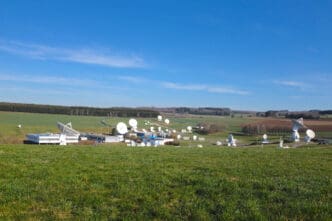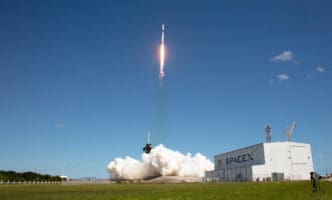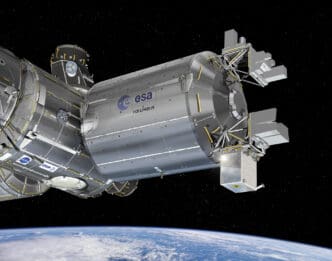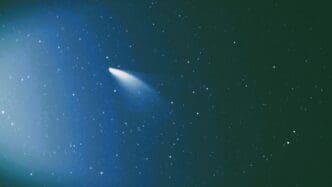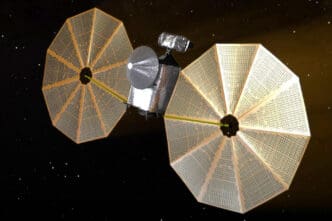The European Space Security and Education Centre (ESEC), located in Belgium, serves as a pivotal hub for the European Space Agency (ESA). Dedicated to space security, education, Smallsat, and Cubesat operations, as well as navigation activities, ESEC plays a crucial role in advancing Europe’s space capabilities.
ESEC functions as the Security Cyber Centre of Excellence (SCCoE) for ESA and houses the Cyber Safety and Security Operations Centre (C-SOC). These components are fundamental to the agency’s cybersecurity backbone, set to significantly influence ESEC’s future development. The centre is poised to launch a cybersecurity centre (ECSC) that adheres to the highest standards for processing classified information up to the secret level. The solutions developed will ensure top-tier cybersecurity, protecting equipment, data, and services from potential threats.
ESEC also hosts ESA’s Proba mission control centers, the Space Weather Data Centre, and is part of ESA’s expansive ground station network. With ongoing Smallsat operations and new projects leveraging existing infrastructure, ESEC provides comprehensive services that encompass space security and safety, highlighted by initiatives such as Altius and Hera.
The centre is instrumental in GNSS operations and is set to expand activities to include future initiatives like quantum key distribution (Int-QKD) and the European Quantum Communication Infrastructure (EuroQCI). Established on January 1, 1968, under the European Space Research Organisation (ESRO), ESEC spans 33,000 square meters and operates under a Hosting Agreement with the Government of Belgium.
ESEC comprises two main sites: the ESEC site in Redu, which features part of ESA’s cybersecurity infrastructure, GNSS-related activities, the Space Weather Data Centre, and Proba infrastructure. This site is secured around the clock with comprehensive access control and surveillance. The ESEC-Galaxia site in Transinne, located six kilometers from Redu, focuses on educational activities. It is part of the Galaxia Business Park, which includes the ESA Business Incubation Centre (ESA BIC) and the ESA Education – Training Centre.
ESEC plays a critical role in ESA’s network of ground stations, offering S-band links and in-orbit testing for telecommunication and navigation satellites. The site is equipped with numerous steerable antennas operating across various frequency bands, including S, Ku, Ka, L, and C bands. Notably, the largest antennas include the Galileo IOT L-band (20 m) and Estrack S-band (15 m).
As security elements transition from defense-exclusive to civilian applications, ESEC aims to integrate additional space-security applications into the critical space infrastructure. The space domain is vital to Europe’s economy, security, and daily life, necessitating robust protection against potential attacks that could disrupt or destroy space services, with catastrophic consequences.
The C-SOC, in conjunction with ESA’s other security capabilities, ensures the cybersecurity and resilience of space and corporate mission operations. Together with the Security Cyber Centre of Excellence, these facilities collaborate with the ESOC Network Operations Centre (NOC) and ESA’s Computer and Communications Emergency Response Team (ESACERT) at ESRIN, forming Europe’s unique cybersecurity backbone.
The ESEC Cyber Security Centre (ECSC) stands as a central hub, equipped with state-of-the-art high-security infrastructure. It hosts the C-SOC for classified operational activities, associated server farm, and centralized management of ESEC Classified Sub-Registries and COMSEC Accounts. ECSC features operational monitoring, incident monitoring, and validation facilities arranged in a mirrored setup for third-party use, ensuring compartmentalization.
ESEC’s infrastructure is designed to integrate seamlessly with its natural surroundings, offering thermal inertia, maintainability, and sustainability. As part of the ESA Education Programme, ESEC-Galaxia’s Education Training Centre annually welcomes around 700 university students, 600 primary/secondary school teachers, and approximately 150 trainers from ESA, academia, and industry.
- The Training and Learning Facility includes a training room and Concurrent Design Facility (CDF) for university students, offering training in space systems engineering, mission design, law, spacecraft operations, and entrepreneurship.
- The CubeSat Support Facility features a cleanroom with an electrodynamic shaker, a thermal vacuum chamber, and testing tools for students in the Fly Your Satellite! programme to learn about satellite integration and testing.
- The e-Technology Lab workshops provide educational technology resources to inspire and engage teachers and students in STEM subjects, facilitating participation in ESA classroom projects.

